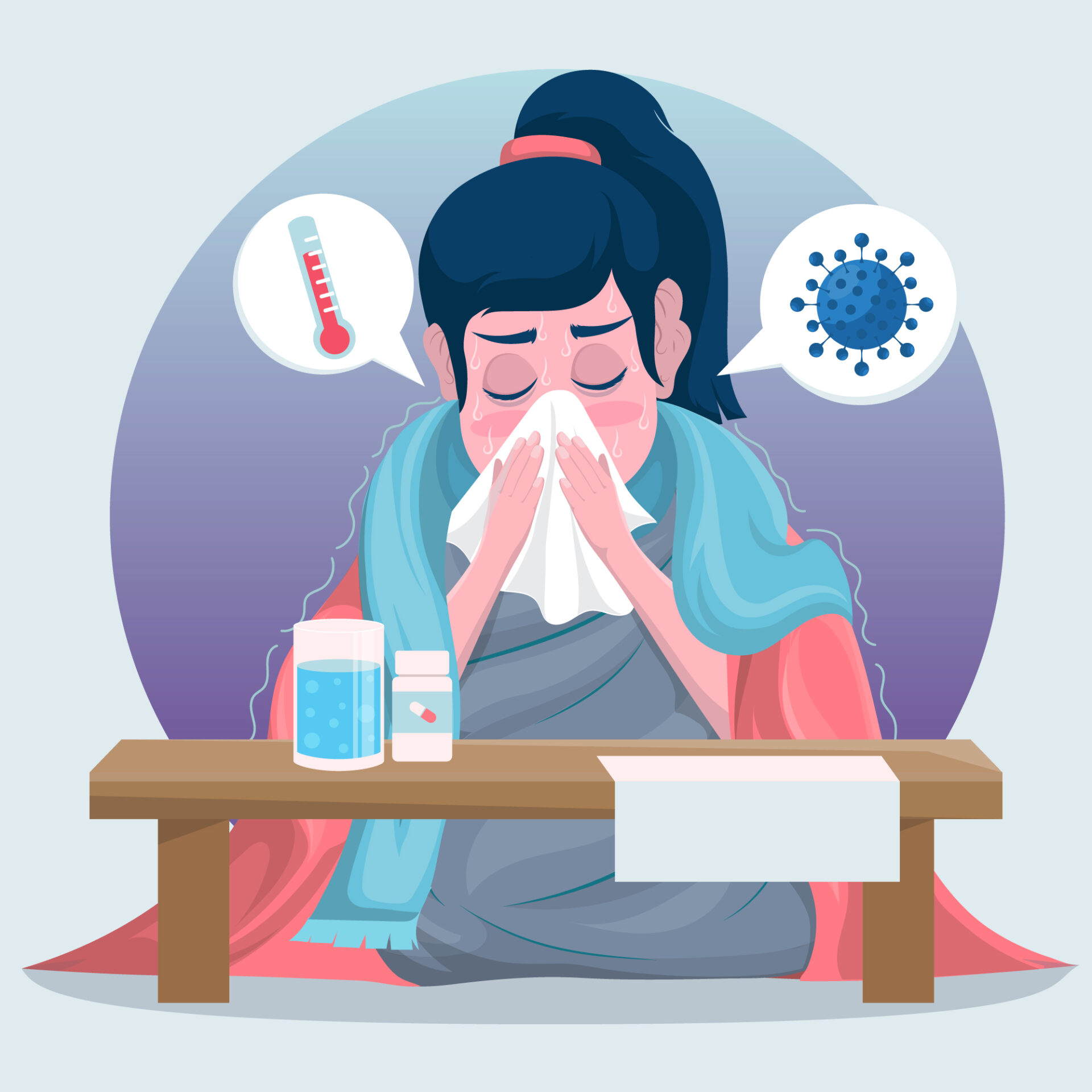Cold vs Flu Symptoms: Key Differences You Shouldn’t Ignore This Season
Contents
- 1 Cold vs Flu Symptoms: Key Differences You Shouldn’t Ignore This Season
- 1.0.0.0.0.1 Read DISCLAIMER
- 1.0.0.0.0.2 The material presented here is for general informational and educational purposes only and is not medical advice. Although we attempt to provide current and accurate information, this blog should not be used as a replacement for professional medical consultation, diagnosis, or treatment. In all cases, consult your physician or an accredited medical practitioner with regards to any medical condition or treatment. Do not ignore professional medical advice or wait for it on the basis of information provided by this blog. In a medical emergency, call emergency services immediately.
- 1.1 Why Recognizing Cold vs Flu Is So Important
- 1.2 How the Symptoms Start: Gradual vs Sudden Onset
- 1.3 Side-by-Side Symptom Comparison
- 1.4 What Makes the Flu So Dangerous?
- 1.5 When Should You See a Doctor?
- 1.6 Cold and Flu in Kids and Older Adults
- 1.7 Treatment: What Helps and What Doesn’t
- 1.8 How to Prevent Cold and Flu
- 1.9 COVID-19 vs Flu vs Cold – Quick Comparison
- 1.10 Top 10 Myths Busted
- 1.11 FAQs – Cold vs Flu Symptoms
- 1.12 Conclusion: Know the Difference, Act Smart
Learn how to tell the difference between cold and flu symptoms. Discover signs, treatment options, prevention tips, and when to seek medical help.
Read DISCLAIMER
The material presented here is for general informational and educational purposes only and is not medical advice. Although we attempt to provide current and accurate information, this blog should not be used as a replacement for professional medical consultation, diagnosis, or treatment. In all cases, consult your physician or an accredited medical practitioner with regards to any medical condition or treatment. Do not ignore professional medical advice or wait for it on the basis of information provided by this blog. In a medical emergency, call emergency services immediately.
You know that feeling—you wake up with a sore throat, a stuffy nose, maybe a mild cough. Your head feels foggy, your body a little sluggish. The big question creeps in: Is it just a cold, or could it be the flu? It’s a common dilemma that people face, especially during seasonal transitions when viruses thrive and our immune defenses fluctuate. But understanding the cold vs flu symptoms isn’t just about curiosity—it’s crucial to managing your health effectively and protecting those around you.
Both the common cold and influenza (flu) are contagious respiratory illnesses, but they are caused by different viruses and present with distinct symptoms. While their signs can overlap, their severity, onset, duration, and risk of complications vary widely. The cold usually lets you power through the day with tissues in your pocket; the flu can hit like a storm and confine you to bed. Let’s explore how you can tell them apart—and why it matters.
Why Recognizing Cold vs Flu Is So Important
Most people consider the cold to be a nuisance. It’s uncomfortable but not debilitating. The flu, however, can lead to severe illness, hospitalization, or even death in high-risk groups. If you can differentiate between the two early on, you’re more likely to:
- Avoid unnecessary medications
- Seek timely medical care
- Prevent spreading infection to others
- Reduce your risk of complications like pneumonia
Every year, seasonal flu contributes to thousands of hospitalizations and deaths. The earlier it’s recognized and managed, the better the outcomes.

How the Symptoms Start: Gradual vs Sudden Onset
Colds tend to sneak in slowly. You might start with a tickle in your throat, then a sniffle, and within a few days, you’ve got a mild cough and a runny nose. You may not even realize you’re sick until the symptoms have peaked.
The flu, however, usually strikes fast and hard. One moment you’re fine, and the next, you’re hit with chills, fatigue, and fever. This sudden onset is a hallmark of influenza and often surprises people with how intense it feels.
Side-by-Side Symptom Comparison
Let’s break it down:
| Symptom | Common Cold | Influenza (Flu) |
| Onset | Gradual | Sudden |
| Fever | Rare or mild | High (100.4°F / 38°C+) |
| Chills | Uncommon | Common |
| Fatigue | Mild | Severe, can last weeks |
| Cough | Mild, hacking | Dry, persistent, painful |
| Sneezing | Very common | Sometimes |
| Body aches | Mild | Common and often severe |
| Sore throat | Common | Possible |
| Headache | Rare | Common |
| Nasal congestion | Very common | Sometimes |
| Loss of appetite | Rare | Common |
What Makes the Flu So Dangerous?
Unlike a cold, which is usually self-limiting, the flu can lead to:
- Bronchitis
- Pneumonia
- Sinus infections
- Worsening of chronic conditions (asthma, diabetes, heart disease)
The flu also affects vulnerable populations more severely:
elderly adults, children under 5, pregnant women, and immunocompromised individuals.

When Should You See a Doctor?
You should seek immediate medical attention if you experience:
- Difficulty breathing
- Persistent fever over 102°F (39°C)
- Chest pain or pressure
- Severe muscle pain
- Dehydration signs (dark urine, dizziness)
- Mental confusion
- Symptoms worsening after initial improvement
For people with existing health issues or weak immunity, flu symptoms can spiral quickly.
Cold and Flu in Kids and Older Adults
In children, flu can show up with vomiting, diarrhea, and high fever, which are less common in adults.
In elderly patients, symptoms may be subtler—like confusion, fatigue, or loss of appetite—even without a fever. These groups should never be ignored.
Treatment: What Helps and What Doesn’t
Home Remedies That Help Both Conditions
- Drink warm fluids (herbal teas, soups)
- Get plenty of rest
- Use steam inhalation or humidifiers
- Use OTC medicines like acetaminophen or ibuprofen
- Nasal sprays or saline rinses for congestion
- Honey and turmeric milk for sore throat
Antivirals like oseltamivir (Tamiflu) work best when taken within the first 48 hours of flu symptoms. These can reduce the severity and shorten the duration of the illness. They do not work for the common cold.
How to Prevent Cold and Flu
- Get the flu vaccine yearly (best given before winter)
- Wash hands regularly with soap
- Avoid touching your face
- Sanitize high-touch surfaces
- Maintain a healthy immune system (eat well, sleep enough)
- Stay away from infected individuals
- Mask up in crowded or sick environments

COVID-19 vs Flu vs Cold – Quick Comparison
| Symptom | COVID-19 | Flu | Common Cold |
| Fever | Common | Common | Rare |
| Loss of taste/smell | Common | Rare | Rare |
| Breathing issues | Sometimes | Sometimes | Rare |
| Fatigue | Common | Common | Mild |
| Cough | Dry or productive | Dry | Mild |
| Sneezing | Rare | Rare | Common |
Top 10 Myths Busted
- Cold weather causes colds – It’s the viruses, not temperature.
- Antibiotics help flu – False. Antibiotics are for bacterial infections.
- Flu vaccine gives you the flu – It doesn’t. It primes your immune system.
- You can’t get flu if you’re healthy – Anyone can.
- You only need a vaccine once – It changes yearly.
- Only old people get severe flu – Young adults can be hit hard too.
- Cough always means cold – Could be flu, COVID-19, or allergies.
- Flu is just a worse cold – No, it’s far more severe.
- Sneezing means you’re not contagious – Contagiousness starts before symptoms.
- Flu can’t kill you – It can, especially with pneumonia.
FAQs – Cold vs Flu Symptoms
Q1. How can I know if I have the flu or just a cold?
Flu starts suddenly with high fever, severe fatigue, and intense aches. Colds come on gradually and are milder.
Q2. Can the flu cause vomiting?
Yes, especially in children, although it’s not the most common symptom.
Q3. Can I take antibiotics for cold or flu?
No. Both are viral. Antibiotics are only useful for bacterial complications.
Q4. Can cold and flu happen at the same time?
Rarely, but co-infections with other viruses or bacteria can occur.
Q5. What’s the fastest way to recover from the flu?
Rest, fluids, and antivirals (within 48 hours of onset) offer the best outcomes.
Q6. When should I call a doctor?
If symptoms are severe, worsening, or affecting breathing, call immediately.
Q7. Are colds contagious?
Yes. They spread via droplets from coughing, sneezing, or touching contaminated surfaces.
Q8. Is a sore throat more common in colds or flu?
It’s more common in colds but can appear in both.
Q9. What if I have cold-like symptoms but no fever?
Likely a cold. Flu almost always presents with a fever.
Q10. Can you prevent cold and flu with natural remedies?
You can boost immunity with nutrition and habits, but vaccination and hygiene are essential for prevention.
Conclusion: Know the Difference, Act Smart
Your body gives you clues—don’t ignore them. If your symptoms come on slow and stay mild, it’s likely a cold. But if you’re suddenly down with fever, chills, and crushing fatigue, it may be the flu. Knowing these key differences between cold and flu helps you take better care of yourself and your loved ones. Be proactive, not reactive.
And if you haven’t already—get your flu shot this season. It could save your life.
